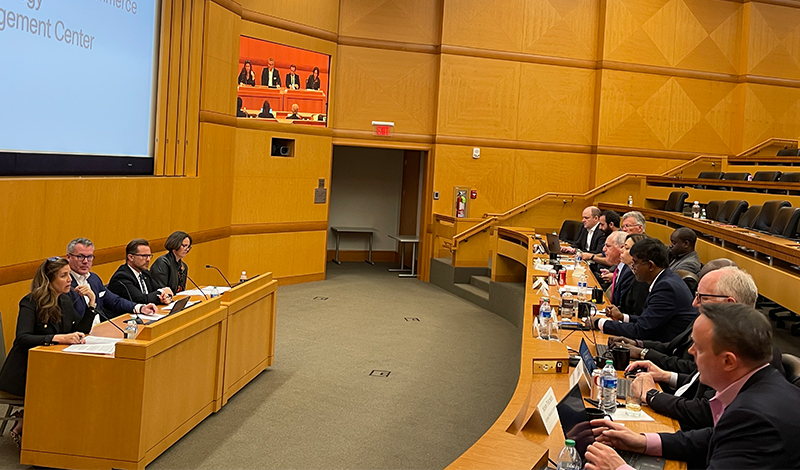
Making AI Work for the Labor Market
The U.S. Chamber of Commerce Artificial Intelligence Commission on Competitiveness, Inclusion, and Innovation (AI Commission) recently sought testimony on workforce and healthcare as it relates to AI. Cheryl Oldham, senior vice president at the Center for Education and Workforce (CEW), testified to the specific efforts that the U.S. Chamber Foundation has initiated as the country prepares students for the workforce and provides opportunities for others to reskill.
“Technology, including AI, when applied in the right way can help unlock and connect people to opportunity, including ensuring people are matched to the right jobs and the right education and workforce development pathways,” Oldham said. “It will also give employers and their HR systems the tools they need to hire based on skill and to better assess an individual’s fit for a job or career advancement.”
News of a tight labor market has dominated headlines for months now. While the retail and restaurant industry continue to seek out workers, many of last year’s job quitters were, in fact, job swappers. Data from the Bureau of Labor Statistics and the census demonstrates a nearly one-to-one correlation between the rate of quitting and swapping. It suggests a greater mismatch between connecting the right people with the right job opportunities. This shift is not of a rejection of work but rather an increased demand from workers who want their employers to listen and respond to their need for more reliable schedules, more extensive leave, and flexible work environments.
Eight years ago, the Chamber Foundation conceived of a pilot initiative, Talent Pipeline Management, as a set of strategies and training for business intermediaries and employers based on supply chain management principles. It offers a data-driven, end-to-end process for creating pipelines of talent for new hires, upskilling, and diversifying the workforce. This program ensures that the training delivered aligns with the needs of the job and leads to better retention. When jobs change and skill requirements evolve, employers can signal those changes to the education system, and they are able to adjust their programs to better serve the learner or job seeker.
Additionally, one critical area of growth and potential involves improving employers’ data standards. CEW has developed an initiative, Jobs and Employment Data Exchange (JEDx), to assist in standardizing employment and data records. Better data standards allow employers to better signal job requirements and lead to better employment outcomes.
As life expectancy and cost of living increase, more employees are jumping around to seek out opportunities to improve their pay and gain new skills that can help them thrive in a rapidly changing labor market. By ensuring a better alignment between a job and the worker from the start, companies can recruit and retain employees at a higher rate and continue to stay competitive.
Learn more about the Chamber Foundation’s workforce development efforts here.
The Weekly Download
Subscribe to receive a weekly roundup of the Chamber Technology Engagement Center (C_TEC) and relevant U.S. Chamber advocacy and events.
The Weekly Download will keep you updated on emerging tech issues including privacy, telecommunications, artificial intelligence, transportation, and government digital transformation.
